2nd Peau
Il s’agit d’hommes et de femmes qui ne retranscrivent pas seulement l’image d’un corps mais le restituent concrètement, feintant même son volume. Ces photographies montrent ce que nous ne pouvons habituellement voir les uns des autres ; le vêtement constitue alors à nos yeux la 1ere peau et la peau au sens propre n’en est que la seconde, visible dans son intégralité dans une sphère intime ou fermée. En inversant ces notions figuratives, Julien Fleurance tend à rendre à la peau, et à la nudité qu’elle implique si l’on veut s’y intéresser dans sa globalité, son importance quant
à l’esthétique du nu.La peau, seule partie visible du corps par simple coup d’oeil, est ainsi reconsidérée et présentée de manière brute, sans artifices. Elle révèle le corps, baignée dans une lumière naturelle ; il n’est plus seulement question d’un corps livré dans son état originel mais d’un individu présentant une version de l’idée (ou image mentale) qu’il se fait de son propre corps. Leurs proportions singulières ne répondent pas aux canons de beauté d’une époque en particulier ; ces modèles se sont portés volontaires pour se livrer à cette expérimentation du nu. Le sujet ne touche pas la question du degré de beauté ou de laideur de l’image mais relève de l’expérience performative – du côté du photographe tout comme du modèle. En effet, le modèle volontaire, souvent motivé par un esprit de dépassement de soi, a été sollicité par le photographe de façon à ce qu’il décide lui-même de la posture dans laquelle son corps apparaîtra. Julien Fleurance cherche à capturer au-delà du corps ce qu’il s’en dégage d’immatériel : le ressenti d’une personne n’ayant jamais posé nu ni même jamais été modèle. Pour lui c’est aussi une pratique nouvelle mais qui s’inscrit dans un contexte précis d’appréhension du nu, celui de la confrontation de l’instinct du corps et des barrières psychologiques imposées à diverses échelles de notre existence. C’est en cela que cette série relève de la performance ; l’artiste s’est en effet restreint à trois jours de travail – uniquement de la prise photographique car sans montage ni atelier retouche. Le bouche à oreille fût l’unique moyen de communication employé pour l’appel lancé aux modèles qui se sont vus immédiatement expliquer le projet par l’artiste lui-même. A l’issue de cette présentation simple du projet, l’individu était libre de poursuivre en se rendant dans la cour intérieure de l’immeuble afin d’y poser nu, dans une position qui lui permettrait de se sentir à l’aise. L’objectif de Julien Fleurance consiste à obtenir un maximum de photographies sur trois jours à raison d’une par modèle. Cette durée courte l’est encore davantage lorsqu’on considère qu’elle englobe non seulement le travail du photographe en tant que tel mais aussi la diffusion et la communication autour du projet qui a été lancée le matin du J-3 avant la fin de la performance. Il ne s’agit donc pas de se laisser rattraper par « l’embarras du choix » ; tout le monde est le bienvenu, et quand l’artiste voit dans sa photographie ce qu’il estime être au
plus proche de la réalité tout en relatant une certaine poétique du corps, il arrête la séance. Ainsi, la séance est vite achevée – maximum quinze prises par modèle, et le tri que Julien Fleurance fait ensuite ne laisse la place qu’à une image par modèle. Comme critère de sélection Julien Fleurance avance la concordance entre une façon d’être – superficielle de l’individu – et une posture qui lui garantit une sensation de bien-être face à sa propre nudité. L’unité de lieu vient se substituer aux mouvances du temps – des temps. Car il est important de considérer le moment de la séance si l’on avance le fait que la photographie n’a subit aucun traitement numérique. Nous pouvons dès lors suivre le déplacement de la lumière et ses effets sur le corps du sujet – les variations de couleurs de la peau. L’environnement est plutôt clair et ce que nous distinguons ce sont les matières qui se révèlent en fonction de leur éclairage. La peau semble douce ainsi projetée devant ce mur de crépis gris et délabré – un endroit romantique, suggérant quelques ruines de constructions humaines envahies par une verdure anarchique. L’état originel de l’homme porté par un homme conscient de la fin de cet état là et luttant
pour ne pas s’en sentir offusqué – tentant de rendre visible sa nudité tout en se sentant à l’aise.
(Texte Elodie Goux)
These men and women not only transcribe the image of a body but restore it concretely, even faking its volume. These photographs show what we can not usually see in each other; clothing is then for us the first skin and skin is literally only secondary, visible in its all, in an intimate or closed sphere. By reversing these figurative notions, Julien Fleurance tends to give back to the skin and the nudity it involves, its importance in the aesthetics of the nude, if you look at it in its globality. The skin, only visible part of the body at first glance, is then reconsidered and presented in a raw manner, without artifice. It reveals the body, bathed in natural light; it is not just about a body in its original state but rather an individual suggesting the idea (or mental image) that he or she has of his or her own body. Their unique proportions do not meet the beauty standards of a particular era, these models have volunteered to engage in this nude experiment. The subject is not about the degree of beauty or ugliness of the image but reveals the performative experience from the photographer's point of view as well as from the model's. Indeed, the voluntary model, often motivated by a spirit of self-transcendence, was asked by the photographer to decide the posture in which his, her body will appear. Julien Fleurance seeks to capture beyond the body image, its immateriality : the feeling which comes from a person who never posed nude or even ever modelled. For him it is a new practice but this falls in a specific context,the apprehension of the nude and the confrontation of the body instinct and the psychological barriers imposed at various levels of our existence. This is where these photographs become a performance; the artist has indeed restricted himself to three days of work – which is based only on taking photographs without editing or retouching them. Word of mouth was the only communication medium used to find models and the whole project was then explained to them by the artist. Following this simple presentation of the project, the individual was free to pursue by visiting the inner courtyard of the building in order to pose nude in a position that would allow him or her to feel comfortable. The objective of Julien Fleurance is to obtain a maximum of photographs over three days limiting a to one photograph per model. This short duration is even more so when one considers that it encompasses not only the work of the photographer as such but also the casting and communication about the project that was launched on the morning of D-3 before the end of the performance. It is therefore not to get caught up by the "embarrassment of choice "; everyone is welcome, and when the artist sees in his photograph what he considers to be the closest to the reality while showing a certain kind of poetry of the body, he stops the session. Thus, the session is quickly completed with a maximum of fifteen takes by model, then the sorting and Julien Fleurance leaves only one picture per model. As a selection criterion Julien Fleurance advance the correlation between a shallow way of being of the individual and a posture that guarantees a feeling of well-being while facing his/her own nakedness. The unity of place comes as a substitute for the movements of time or times. For it is important to consider the moment of the session and the fact that the photography has not undergone any digital processing. We can therefore track the movement of light and its effects on the subject's body – the variations of the skin colors. The environment is quite clear and what we distinguish are the materials revealed according to the lighting. The skin appears smooth opposed to the dilapidated wall of grey coating - a romantic place, suggesting some human constructions ruins overgrown by anarchic greenery. Man's original state worn by a man conscious of the end of this state and fighting for not to feel offended - trying to make visible his nakedness while feeling comfortable.
(Text: Elodie Goux)
Il s’agit d’hommes et de femmes qui ne retranscrivent pas seulement l’image d’un corps mais le restituent concrètement, feintant même son volume. Ces photographies montrent ce que nous ne pouvons habituellement voir les uns des autres ; le vêtement constitue alors à nos yeux la 1ere peau et la peau au sens propre n’en est que la seconde, visible dans son intégralité dans une sphère intime ou fermée. En inversant ces notions figuratives, Julien Fleurance tend à rendre à la peau, et à la nudité qu’elle implique si l’on veut s’y intéresser dans sa globalité, son importance quant
à l’esthétique du nu.La peau, seule partie visible du corps par simple coup d’oeil, est ainsi reconsidérée et présentée de manière brute, sans artifices. Elle révèle le corps, baignée dans une lumière naturelle ; il n’est plus seulement question d’un corps livré dans son état originel mais d’un individu présentant une version de l’idée (ou image mentale) qu’il se fait de son propre corps. Leurs proportions singulières ne répondent pas aux canons de beauté d’une époque en particulier ; ces modèles se sont portés volontaires pour se livrer à cette expérimentation du nu. Le sujet ne touche pas la question du degré de beauté ou de laideur de l’image mais relève de l’expérience performative – du côté du photographe tout comme du modèle. En effet, le modèle volontaire, souvent motivé par un esprit de dépassement de soi, a été sollicité par le photographe de façon à ce qu’il décide lui-même de la posture dans laquelle son corps apparaîtra. Julien Fleurance cherche à capturer au-delà du corps ce qu’il s’en dégage d’immatériel : le ressenti d’une personne n’ayant jamais posé nu ni même jamais été modèle. Pour lui c’est aussi une pratique nouvelle mais qui s’inscrit dans un contexte précis d’appréhension du nu, celui de la confrontation de l’instinct du corps et des barrières psychologiques imposées à diverses échelles de notre existence. C’est en cela que cette série relève de la performance ; l’artiste s’est en effet restreint à trois jours de travail – uniquement de la prise photographique car sans montage ni atelier retouche. Le bouche à oreille fût l’unique moyen de communication employé pour l’appel lancé aux modèles qui se sont vus immédiatement expliquer le projet par l’artiste lui-même. A l’issue de cette présentation simple du projet, l’individu était libre de poursuivre en se rendant dans la cour intérieure de l’immeuble afin d’y poser nu, dans une position qui lui permettrait de se sentir à l’aise. L’objectif de Julien Fleurance consiste à obtenir un maximum de photographies sur trois jours à raison d’une par modèle. Cette durée courte l’est encore davantage lorsqu’on considère qu’elle englobe non seulement le travail du photographe en tant que tel mais aussi la diffusion et la communication autour du projet qui a été lancée le matin du J-3 avant la fin de la performance. Il ne s’agit donc pas de se laisser rattraper par « l’embarras du choix » ; tout le monde est le bienvenu, et quand l’artiste voit dans sa photographie ce qu’il estime être au
plus proche de la réalité tout en relatant une certaine poétique du corps, il arrête la séance. Ainsi, la séance est vite achevée – maximum quinze prises par modèle, et le tri que Julien Fleurance fait ensuite ne laisse la place qu’à une image par modèle. Comme critère de sélection Julien Fleurance avance la concordance entre une façon d’être – superficielle de l’individu – et une posture qui lui garantit une sensation de bien-être face à sa propre nudité. L’unité de lieu vient se substituer aux mouvances du temps – des temps. Car il est important de considérer le moment de la séance si l’on avance le fait que la photographie n’a subit aucun traitement numérique. Nous pouvons dès lors suivre le déplacement de la lumière et ses effets sur le corps du sujet – les variations de couleurs de la peau. L’environnement est plutôt clair et ce que nous distinguons ce sont les matières qui se révèlent en fonction de leur éclairage. La peau semble douce ainsi projetée devant ce mur de crépis gris et délabré – un endroit romantique, suggérant quelques ruines de constructions humaines envahies par une verdure anarchique. L’état originel de l’homme porté par un homme conscient de la fin de cet état là et luttant
pour ne pas s’en sentir offusqué – tentant de rendre visible sa nudité tout en se sentant à l’aise.
(Texte Elodie Goux)
These men and women not only transcribe the image of a body but restore it concretely, even faking its volume. These photographs show what we can not usually see in each other; clothing is then for us the first skin and skin is literally only secondary, visible in its all, in an intimate or closed sphere. By reversing these figurative notions, Julien Fleurance tends to give back to the skin and the nudity it involves, its importance in the aesthetics of the nude, if you look at it in its globality. The skin, only visible part of the body at first glance, is then reconsidered and presented in a raw manner, without artifice. It reveals the body, bathed in natural light; it is not just about a body in its original state but rather an individual suggesting the idea (or mental image) that he or she has of his or her own body. Their unique proportions do not meet the beauty standards of a particular era, these models have volunteered to engage in this nude experiment. The subject is not about the degree of beauty or ugliness of the image but reveals the performative experience from the photographer's point of view as well as from the model's. Indeed, the voluntary model, often motivated by a spirit of self-transcendence, was asked by the photographer to decide the posture in which his, her body will appear. Julien Fleurance seeks to capture beyond the body image, its immateriality : the feeling which comes from a person who never posed nude or even ever modelled. For him it is a new practice but this falls in a specific context,the apprehension of the nude and the confrontation of the body instinct and the psychological barriers imposed at various levels of our existence. This is where these photographs become a performance; the artist has indeed restricted himself to three days of work – which is based only on taking photographs without editing or retouching them. Word of mouth was the only communication medium used to find models and the whole project was then explained to them by the artist. Following this simple presentation of the project, the individual was free to pursue by visiting the inner courtyard of the building in order to pose nude in a position that would allow him or her to feel comfortable. The objective of Julien Fleurance is to obtain a maximum of photographs over three days limiting a to one photograph per model. This short duration is even more so when one considers that it encompasses not only the work of the photographer as such but also the casting and communication about the project that was launched on the morning of D-3 before the end of the performance. It is therefore not to get caught up by the "embarrassment of choice "; everyone is welcome, and when the artist sees in his photograph what he considers to be the closest to the reality while showing a certain kind of poetry of the body, he stops the session. Thus, the session is quickly completed with a maximum of fifteen takes by model, then the sorting and Julien Fleurance leaves only one picture per model. As a selection criterion Julien Fleurance advance the correlation between a shallow way of being of the individual and a posture that guarantees a feeling of well-being while facing his/her own nakedness. The unity of place comes as a substitute for the movements of time or times. For it is important to consider the moment of the session and the fact that the photography has not undergone any digital processing. We can therefore track the movement of light and its effects on the subject's body – the variations of the skin colors. The environment is quite clear and what we distinguish are the materials revealed according to the lighting. The skin appears smooth opposed to the dilapidated wall of grey coating - a romantic place, suggesting some human constructions ruins overgrown by anarchic greenery. Man's original state worn by a man conscious of the end of this state and fighting for not to feel offended - trying to make visible his nakedness while feeling comfortable.
(Text: Elodie Goux)
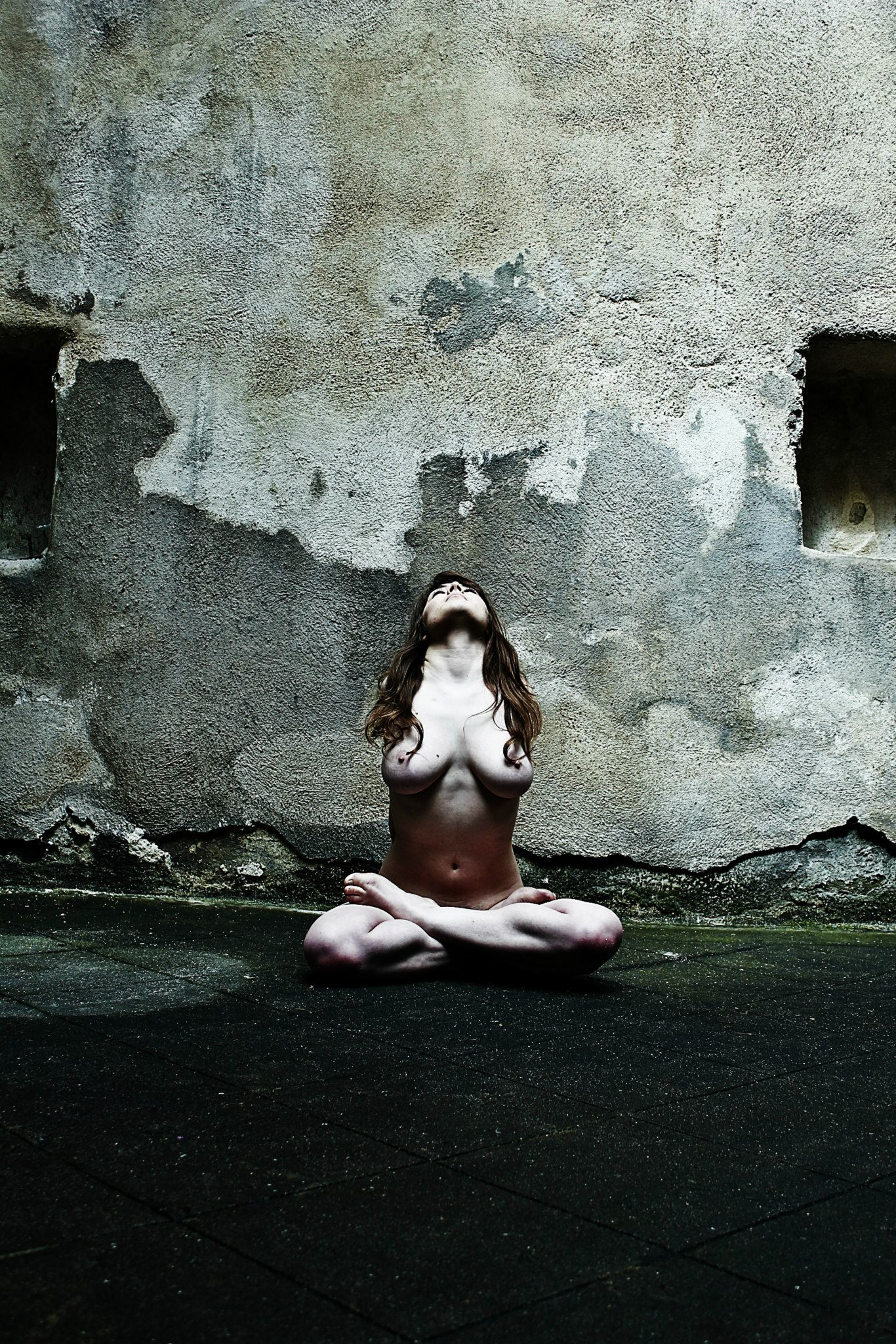
19:54
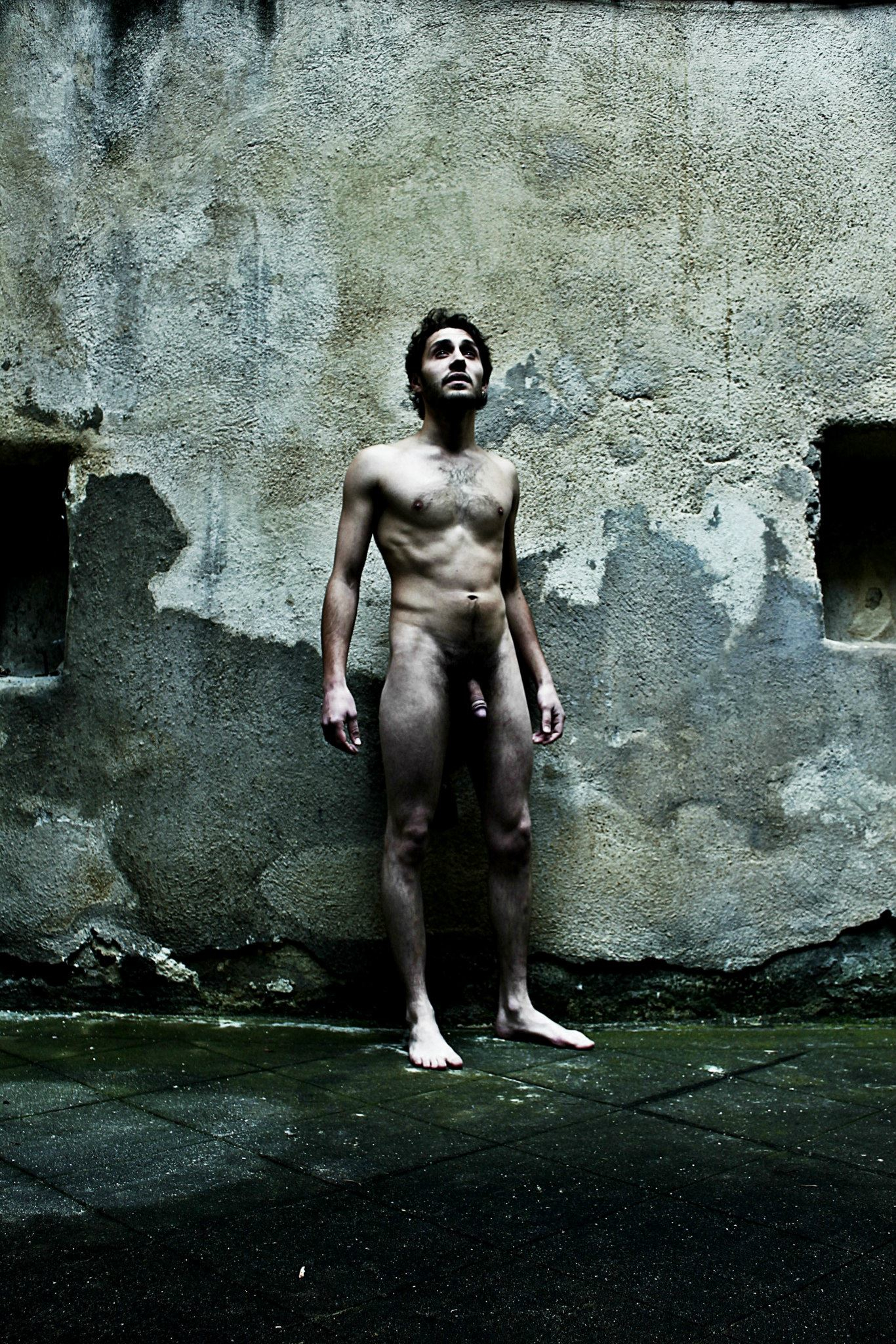
20:32

17:52
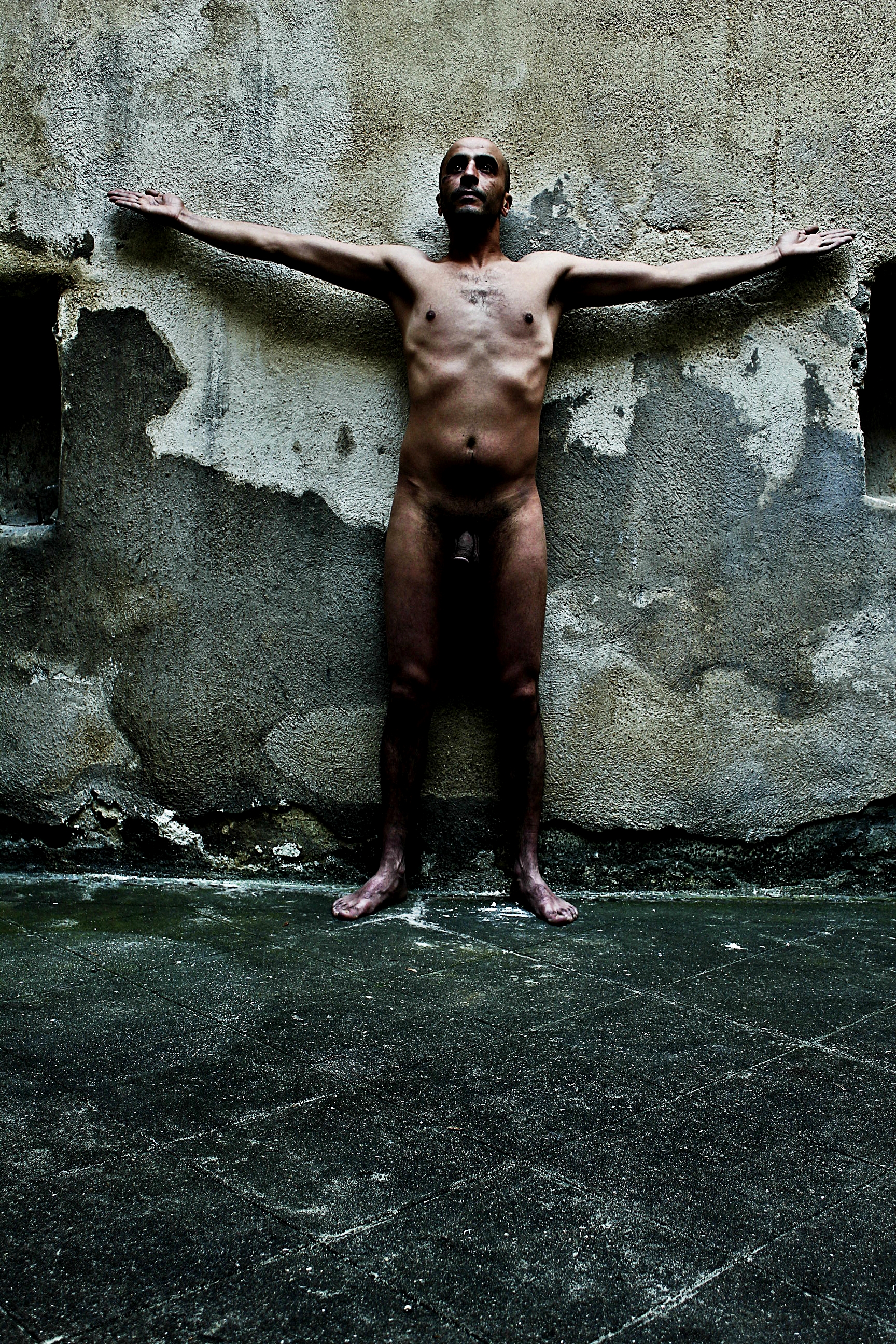
18:31
.jpg)
19:12
.jpg)
18:19
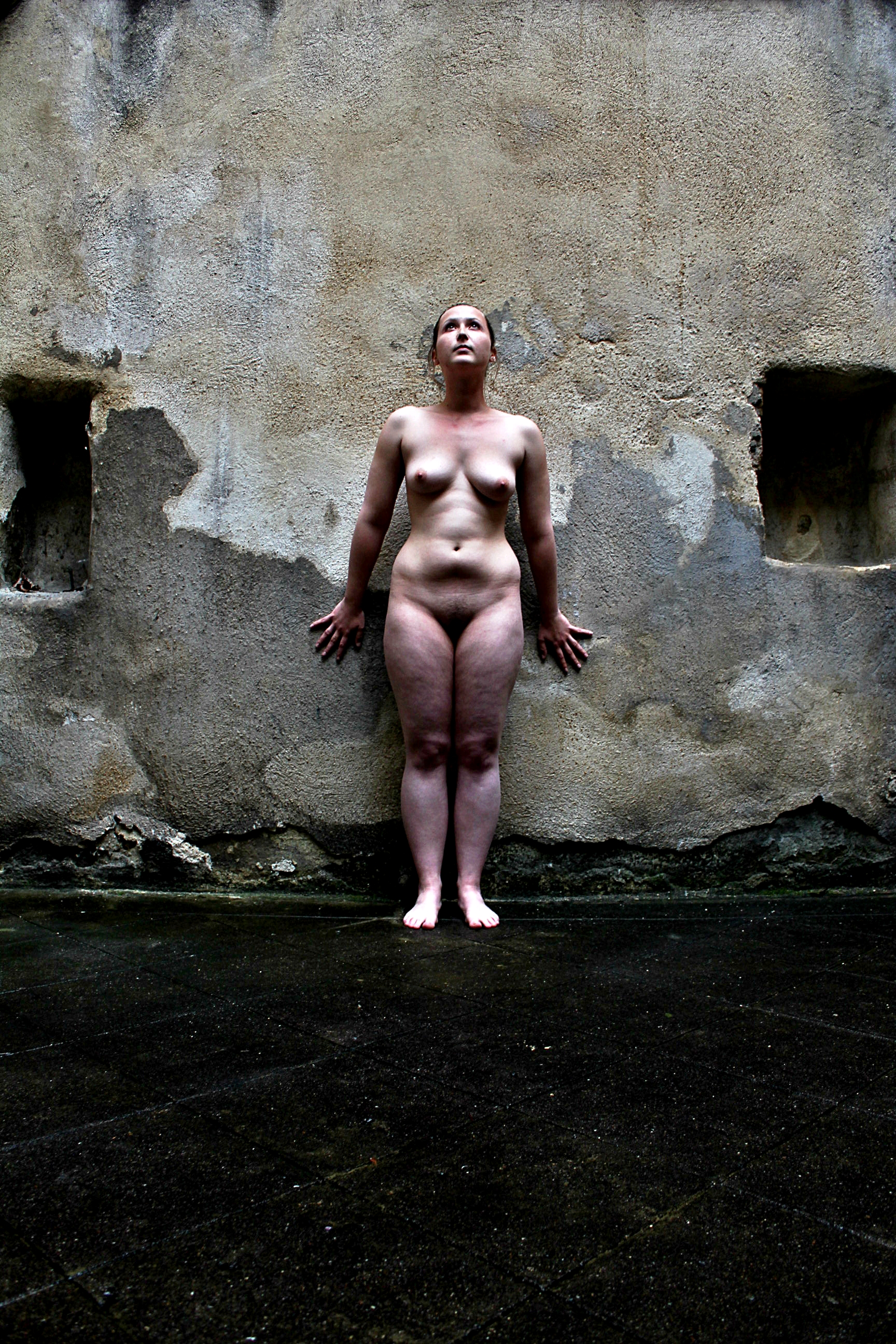
18:49

17:12
.jpg)
20:08
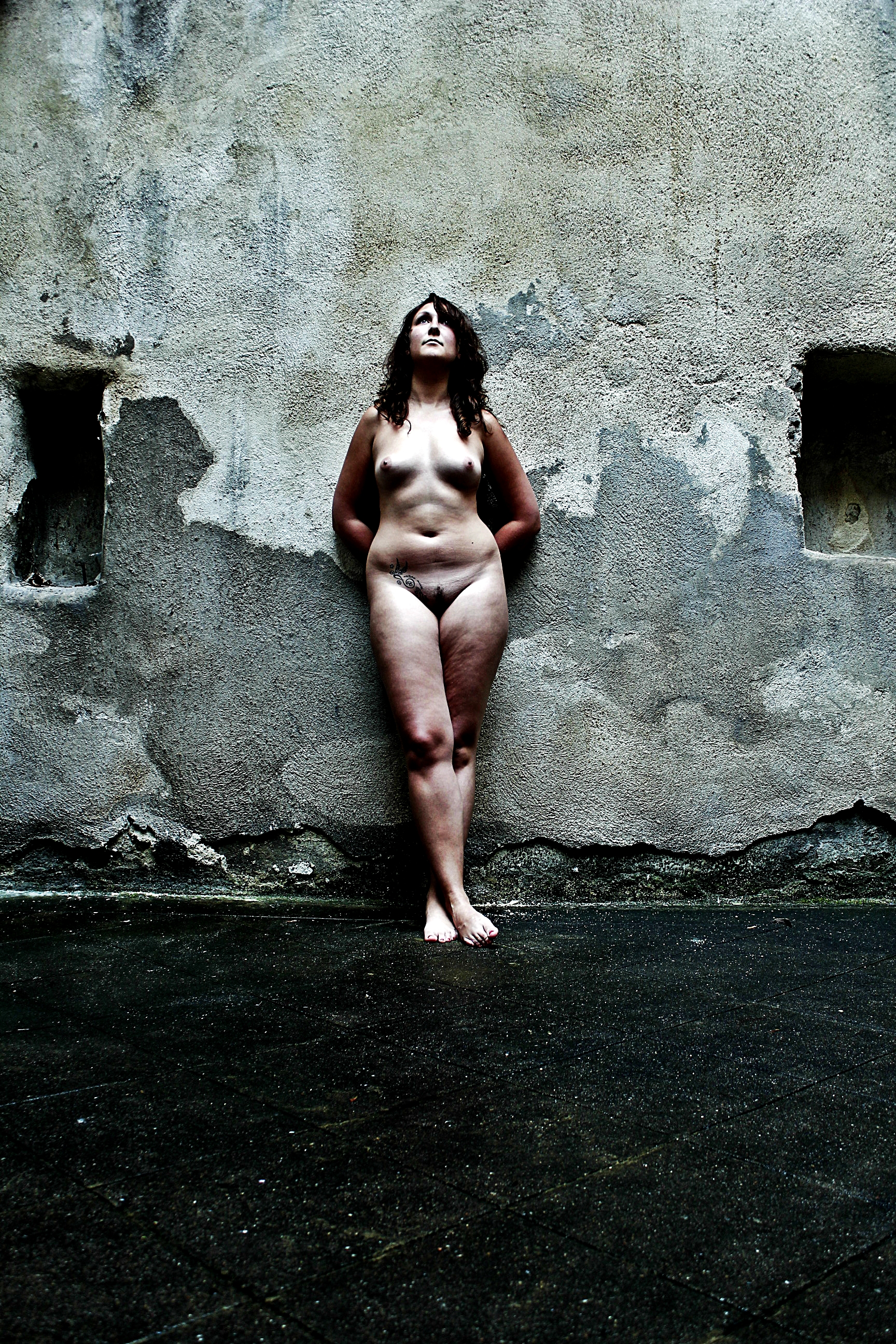
18:43